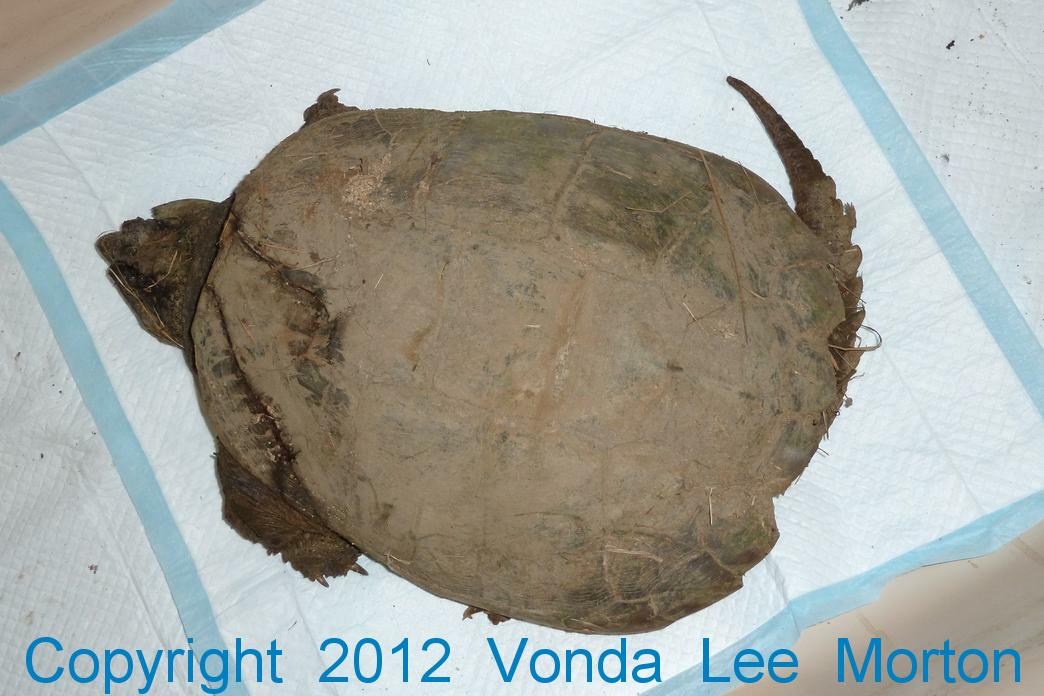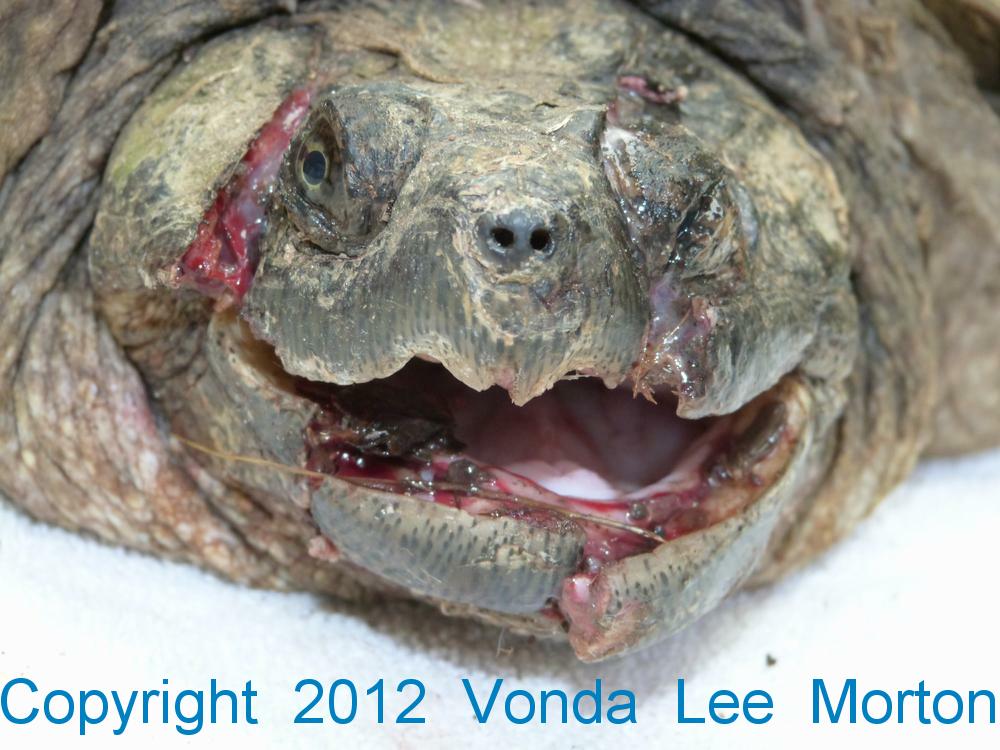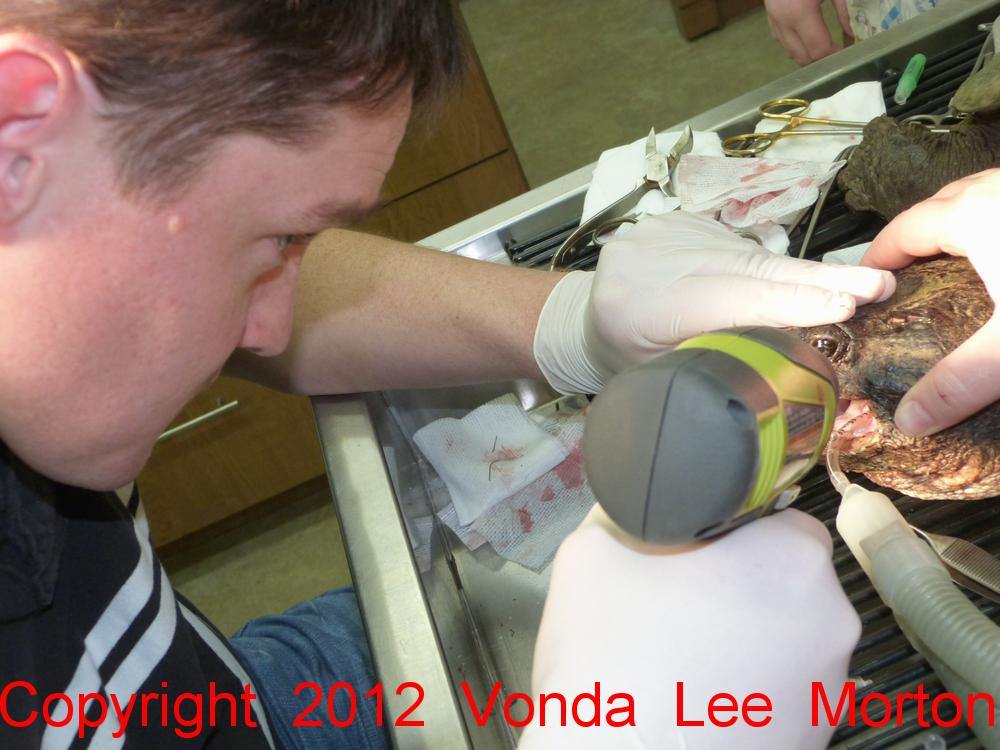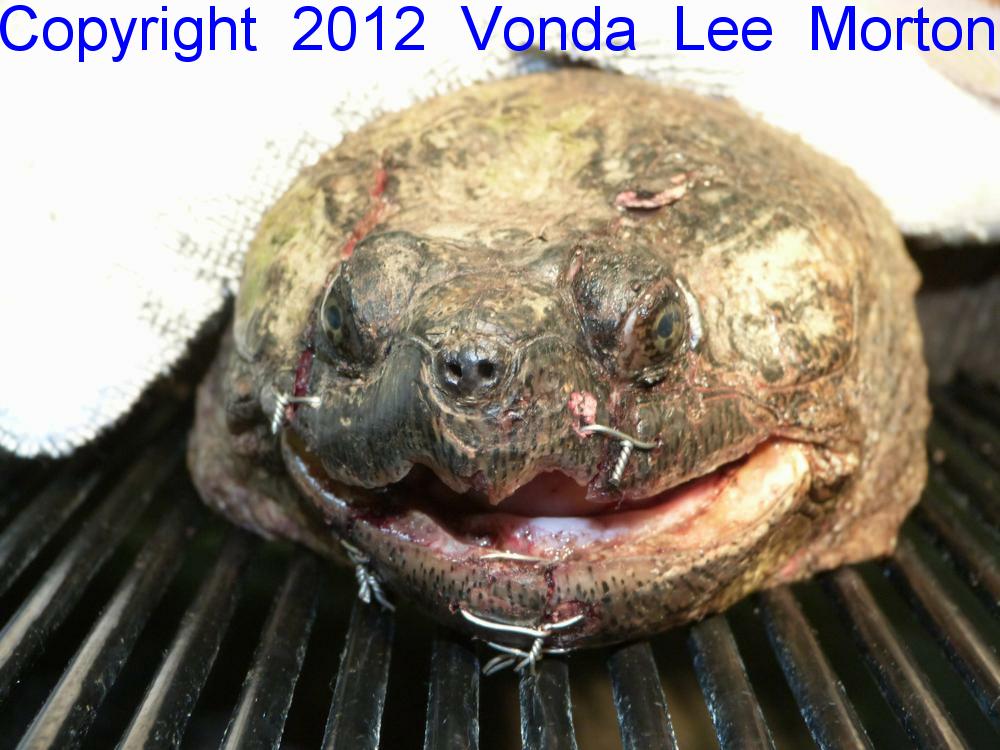Why am I leading with this? Late last week LWR received a HBC (hit by car) common snapping turtle. I have very little experience with reptiles; normally the turtles I see have been HBC and are damaged beyond repair—jaws missing, heads crushed, shells shattered, etc. I must confess, somewhat shamefacedly, I don’t know my reptile species well—I wasn’t even sure what species of turtle this was! However, he looked to my admittedly inexperienced eye as if he had a chance. I immediately put in calls to two fellow rehabbers who work with reptiles, Steve Hicks of Bubba & Friends and Kathryn Dudeck of the Chattahoochee Nature Center. Within short order, we had confirmed his species as common snapping turtle.
(As a side note here, and because you know I have to get in at least one good rant, there’s just no excuse for running over a turtle, okay? None. It’s not like they dart out in front of you; you can see them in plenty of time to slow down and avoid them. People who get their jollies running over turtles have a special place reserved for them in hell.)
Even at that, we still haven’t exhausted the list of people who made the attempt to save this turtle’s life possible: Every person at Smalley’s contributed in one form or another. In particular, vets Peggy Hobby and Michelle Hubbard saw regular patients while Richie performed surgery; vet techs Autumn Parker and Betty Smith assisted in prep and surgery; vet Jim Hobby, who wasn’t even scheduled to work that day, was on hand for quite some time to assist Richie as needed.
So, some six hours after the surgery began, we had a turtle who appeared to have a fighting chance. We, of course, named him Lazarus. I took him home and kept a heat lamp on him all night, checking every hour until the wee hours of the morning to make sure he was still with us. I sent pictures of his post-surgery face to Steve and Kathryn, who both said Richie had done an outstanding job. We were all guardedly optimistic and began talking about plans for the turtle’s future, although Kathryn warned me that it could take up to 72 hours before we could be fairly certain he was going to make it.
So why the long tale about a turtle who didn’t make it? First, to emphasize that rehabbers don’t go it alone; we have networks of people we can call on for help when needed. Second, to give you a better idea of what a rehabber’s world is like. We and our vets expend massive amounts of time and energy on injured animals that we’re fully aware have only a 50%, sometimes less, chance of survival. It’s not all warm and fuzzy. We lose animals, lots of them. A general rule of thumb is that only 50% of the animals entering a rehab facility will be released. Most of the remainder will die within 12-24 hours of intake or will require euthanasia. Some will die after we struggle for days or weeks to keep them alive. Those are the ones that haunt us, because we always second-guess our decision to attempt treatment, our course of treatment—and sometimes our very ability to rehab effectively at all. The emotional toll, the time commitment, and the sheer expense lead to a very high burnout rate among rehabbers.
Ultimately, though, it all boils down to this: In Nature’s eyes, the moment a human can touch a wild animal, that animal is dead. If we can successfully treat and release it, we’ve given it back its life. For that animal, the entire world is changed because a network of dedicated people cared enough to try.
This is my thank you to all those people who help me make a difference, who help me “give Nature’s children a second chance.”




 RSS Feed
RSS Feed
